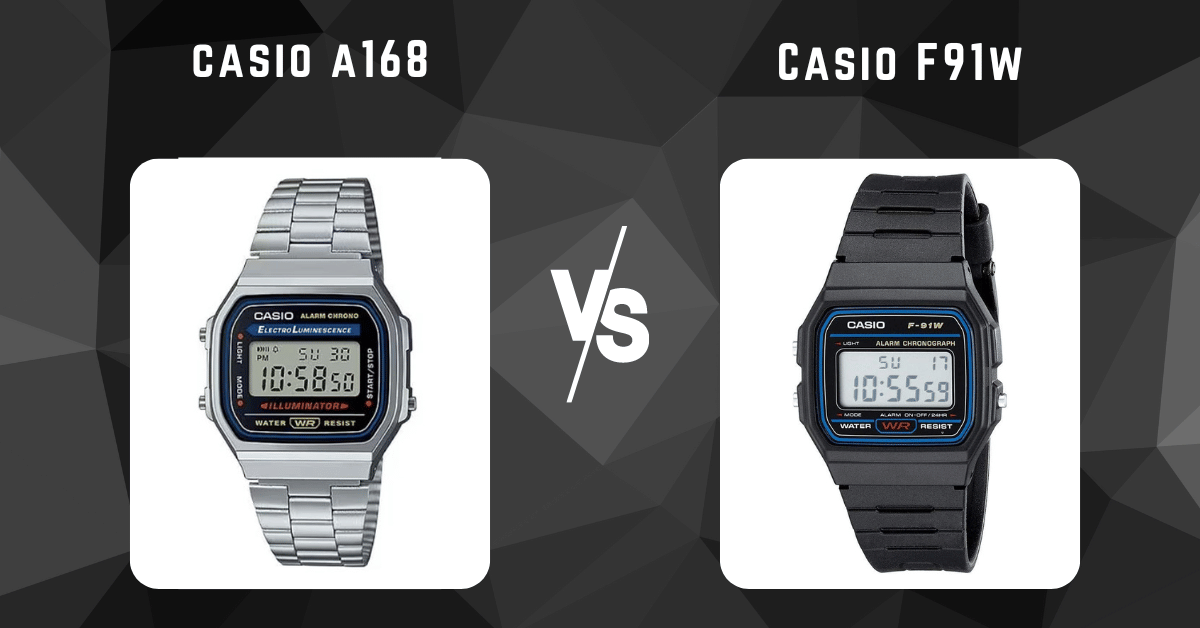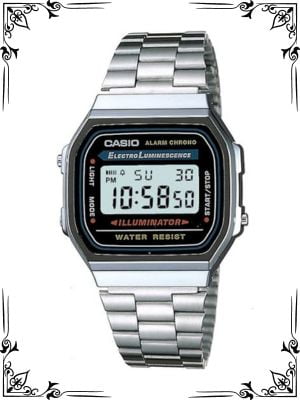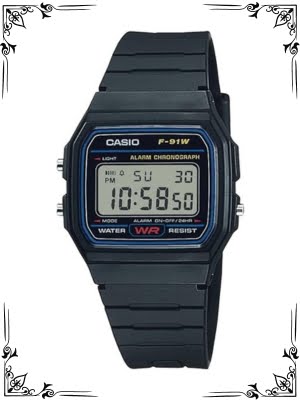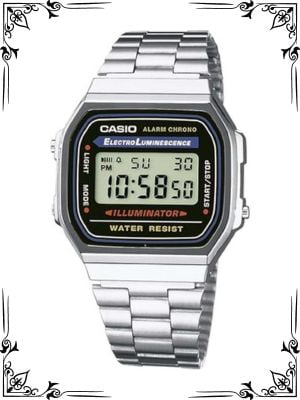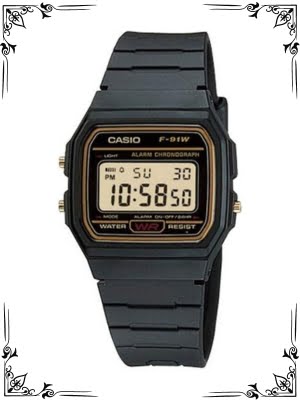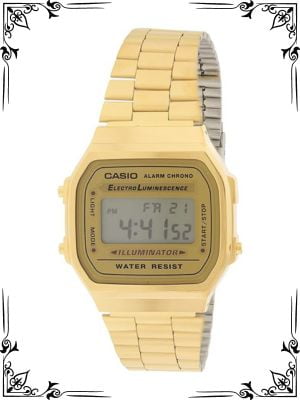Casio’s digital watch legacy is undeniable, with the F-series and A-series being two of their most popular lines. Within these lines, the F91W and A168 stand out as affordable, functional, and surprisingly stylish options.
While they share a similar digital timekeeping core, key differences exist in design, materials, and features. This detailed breakdown will help you navigate these two iconic watches and choose the perfect one for your needs.
Functionality: Mostly Identical, with a Key Distinction
Both the F91W and A168 offer a comprehensive suite of functionalities for daily use:
Timekeeping: Basic timekeeping includes displaying hours, minutes, seconds (with leading zero for the first 10 seconds), 12/24 hour format, and the day of the week.
Calendar: An automatic calendar keeps you on track, automatically adjusting for leap years from January 1st, 1930, to December 31st, 2100.
Daily Alarm: Set a single alarm with a classic beep to wake you up or remind you of important tasks.
Hourly Signal: An optional hourly chime keeps you mindful of the passage of time throughout the day.
Stopwatch: A stopwatch function with a 1/100th-of-a-second resolution allows you to time events up to 24 hours.
Electro-Luminescent Backlight: A press of a button illuminates the digital display with a green electro-luminescent backlight for low-light visibility.
The key difference in functionality lies in the backlight. The F91W has a fairly weak backlight that might not be sufficient in very dark environments. The A168 boasts a significantly brighter and more even backlight, making it easier to read the time in low-light conditions.
Table: Feature Comparison
| Feature | F91W | A168 |
|---|---|---|
| Timekeeping | 12/24 hour format | 12/24 hour format |
| Calendar | Automatic, 1930-2100 | Automatic, 1930-2100 |
| Daily Alarm | Single Alarm | Single alarm |
| Hourly Signal | Optional | Optional |
| Stopwatch | 1/100th second, 24 hr | 1/100th second, 24 hr |
| Backlight | Electro-Luminescent | Electro-Luminescent |
| Backlight Brightness | Low | High |
Design and Aesthetics: Classic vs. Modern
While both watches share a digital display layout, their design philosophies differ:
Case: The F91W features a slim and lightweight case (10mm) made of resin. The A168 has a slightly thicker profile (9.5mm) with a more prominent, chrome-plated bezel.
Strap: The F91W comes with a thin and flexible resin strap with a textured pattern. The A168 boasts a stainless steel bracelet with a folding clasp. Some A168 variations might offer a resin strap option.
Overall Look: The F91W exudes a classic, minimalist aesthetic. The A168 has a more modern and robust look with the stainless steel bracelet.
The choice between these designs depends on your preference. The F91W’s slim profile might be ideal for those who value lightweight comfort. The A168’s metallic accents and bracelet offer a more sophisticated and durable feel.
Materials and Construction: Durability Redefined
Both watches are known for their resilience, but the materials used contribute to their overall feel:
F91W: The entire watch, from the case to the strap, is crafted from resin. While lightweight and shock-resistant, resin can be prone to scratches with rough use.
A168: The A168 utilizes a combination of materials. The caseback is made of resin, but the bezel and bracelet are constructed from stainless steel. This combination provides enhanced scratch resistance and a more substantial feel compared to the F91W.
The F91W remains a very durable watch, but the A168 offers a step up in terms of scratch resistance due to the stainless steel components.
Comfort and Wearability: A Matter of Preference
Despite their similar size, the choice of materials influences how these watches feel on your wrist:
F91W: The F91W’s lightweight resin construction and thin, flexible strap offer a comfortable and barely-there feel on the wrist. This can be particularly advantageous for those who dislike bulky watches.
A168: The A168’s stainless steel bracelet adds weight and might feel slightly bulkier compared to the F91W. However, the bracelet is adjustable and can conform well to different wrist sizes. Some A168 variations with a resin strap offer a similar wearing experience to the F91W.
Ultimately, comfort is subjective. If you prioritize a lightweight, barely-there feel, the F91W might be the better choice. If you prefer a more substantial and secure feel on your wrist, the A168 bracelet might be more suitable.
Price and Value: A Tale of Two Affordabilities
Both the Casio F91W and A168 are incredibly affordable timepieces. The F91W can be found for well under $20, making it a fantastic budget-friendly option. The A168 typically costs slightly more, ranging from $20 to $30.
While there’s a price difference, it’s still a very reasonable price point for the additional features and materials offered by the A168.
Legacy and Popularity: Cult Classics vs. Underdog Appeal
The F91W has achieved legendary status. Its simple design, durability, and affordability have made it a cultural icon, adopted by various demographics worldwide. The A168, while not as ubiquitous, boasts a loyal following who appreciate its blend of classic digital functionality with a more modern aesthetic.
Choosing Between the F91W and A168: The Final Verdict
There’s no single “better” watch. The ideal choice depends on your priorities:
- Choose the F91W if: You prioritize affordability, a lightweight and minimalist design, or a barely-there feel on the wrist.
- Choose the A168 if: You prefer a more modern and stylish design, a stainless steel bracelet for enhanced durability, a brighter backlight for better low-light visibility, or a slightly more substantial feel on the wrist.
No matter which watch you choose, you’re getting a reliable and stylish Casio timepiece that will likely serve you well for years to come.

